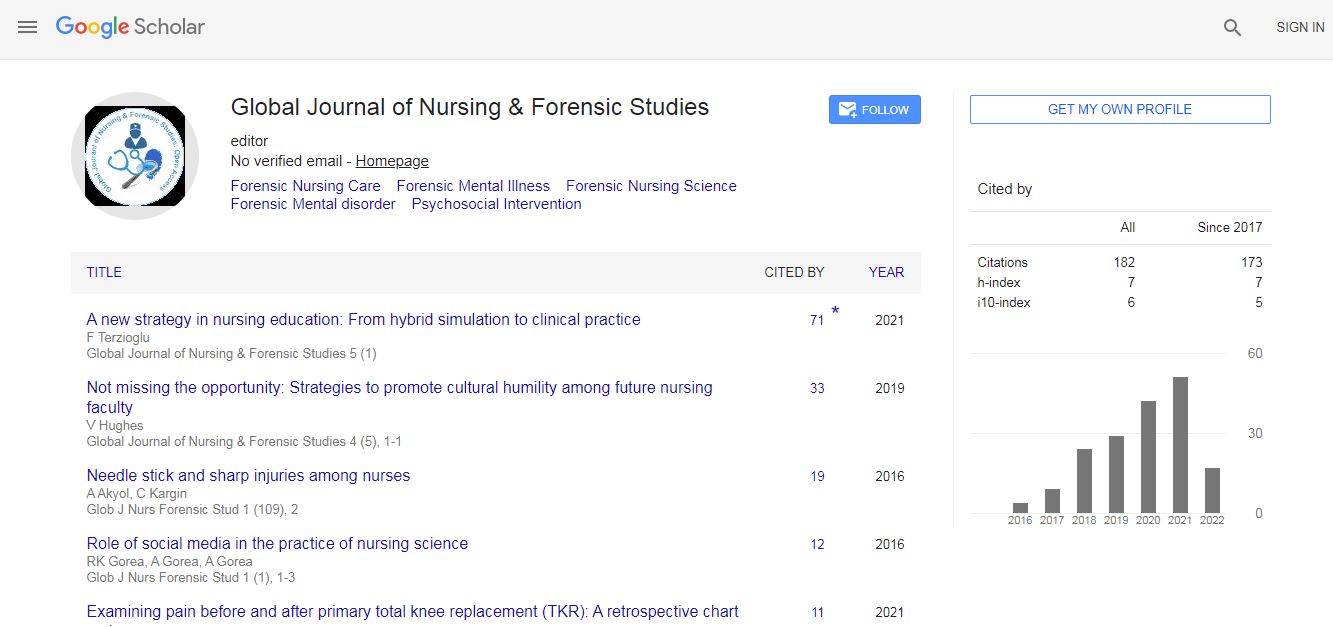Our Group organises 3000+ Global Conferenceseries Events every year across USA, Europe & Asia with support from 1000 more scientific Societies and Publishes 700+ Open Access Journals which contains over 50000 eminent personalities, reputed scientists as editorial board members.
Open Access Journals gaining more Readers and Citations
700 Journals and 15,000,000 Readers Each Journal is getting 25,000+ Readers
Google Scholar citation report
Citations : 82
Optometry: Open Access received 82 citations as per Google Scholar report
Indexed In
- Google Scholar
- RefSeek
- Hamdard University
- EBSCO A-Z
- Euro Pub
- ICMJE
Useful Links
Recommended Journals
Related Subjects
Share This Page
The long term progression of eye-movements in relationship to birth order in children
World Congress and Expo on Optometry & Vision Science
Christine Allison
Illinois College of Optometry, USA
Keynote: Optom Open Access
Abstract
Purpose: The purpose of this longitudinal study was to analyze eye movement data related to birth order in a group of children upon entering Kindergarten, and then again upon entering 3rd grade. We have previously reported on a significant difference in eye movements among the pre-Kindergarten groups of children with no siblings, first born with siblings, and children who are not first born and have siblings. The findings have led to the theory that first born children and children with no siblings may exhibit better saccades and fixation control prior to entering Kindergarten due to differences in the type of activities they pursue. Once children are in school, their activities are more regulated, thus we theorized that the same children prior to entering 3rd grade would not show a significant difference in eye movements. Methods: 112 children with similar academic/socioeconomic backgrounds were examined in the summer prior to Kindergarten. 33 of the same children have been examined again upon entering 3rd grade. The children were given comprehensive exams including tests of accommodation and vergence. The children also received eye-movement analysis with the Visagraph protocol. The caregivers completed a survey regarding the number/ages of siblings, prior school history, and amount of time spent on tasks like reading, using computers, and playing outdoors. Results: Children in the pre-Kindergarten group who were first born exhibited better fixation control with fewer off-target drifts (F 6.09, pâ�?¤0.05) and more efficient horizontal saccades (F 5.96, p<0.05). The Bland-Altman analysis of the 3rd grade group indicated good agreement among all groups for saccadic accuracy, saccadic speed, fluency, and fixation accuracy. Conclusions: The activities that first born children are encouraged to perform regularly prior to Kindergarten may lead to better eye movement skills at that age. However, by 3rd grade, a child is using eye-movements to learn, and uses visual tracking, saccadic sequencing and reading fluency to read at a higher level. Our data suggests that the first born group continues to have moderately improved eye-movement performance compared with the others, but not significantly better. The children in this study will be re-evaluated prior to 6th grade to determine if any new trends with eye movements or binocular stability develop.Biography
Christine Allison is a Fellow of the American Academy of Optometry, a Fellow of the College of Optometrists in Vision Development (COVD), and an American Academy of Optometry Diplomate in Binocular Vision, Perception and Pediatric Optometry, and a Distinguished Scholar and Fellow in the National Academies of Practice. She is the Clinical Director for the Illinois Special Olympics Lions Club International Opening Eyes Program, as well as a Regional Clinical Advisor for this program. She is the President-elect for COVD as well as the Illinois Optometric Association. She has published numerous articles, and given many presentations and lectures both nationally and internationally.
Email: callison@ico.edu

 Spanish
Spanish  Chinese
Chinese  Russian
Russian  German
German  French
French  Japanese
Japanese  Portuguese
Portuguese  Hindi
Hindi 